San Sebastian
Like everyplace, San Sebastian has a long and interesting history, which I’ll spare you. For our purposes, the important event occurred in 1813, when British and Portuguese troops besieged the town, which then was held by a French army — along with the rest of Spain — and generaled by Joseph Napoleon, older brother of the famous Napoleon and about one-hundredth as good a general. Once the British and Portuguese had defeated the French, they burned the town to the ground. This meant that much of San Sebastian had to be built again, and this time denizens could afford bigger and more beautiful houses.
Many of those buildings remain, though many have been replaced over the years. Laurie and I have come to appreciate and search out beautiful buildings; in San Sebastian, that was not hard.
We stayed in a very nice hotel in San Sebastian - the Arrizul Congress Hotel. Although the rooms were European small, the hotel had just the nicest people working there and a little perk: in the lobby was always a bottle of nice cava and champagne glasses. We took advantage of the perk a lot.
We were glad to be in such a nice hotel, because we had to wait out some downpours and it was nice to do so in a decent room. Weather was about the same as Seattle’s January weather - cold and wet. Folks said that even for May in this wet part of Spain, the rain while we were there was excessive. But, being long-time Seattle residents, we just put on a sweater, a sweatshirt, a warm coat and a raincoat, picked up our umbrellas and away we went.
Sam Sebastian's Beach
Really, the beach is what made San Sebastian famous. Starting in the late 1800s, royalty and aristocrats from France and Spain came to San Sebastian for the beach. Soon they were building huge houses along the main beach, and San Sebastian became “the” place to go for these folks.
Here’s a view from afar of San Sebastian’s main beach:
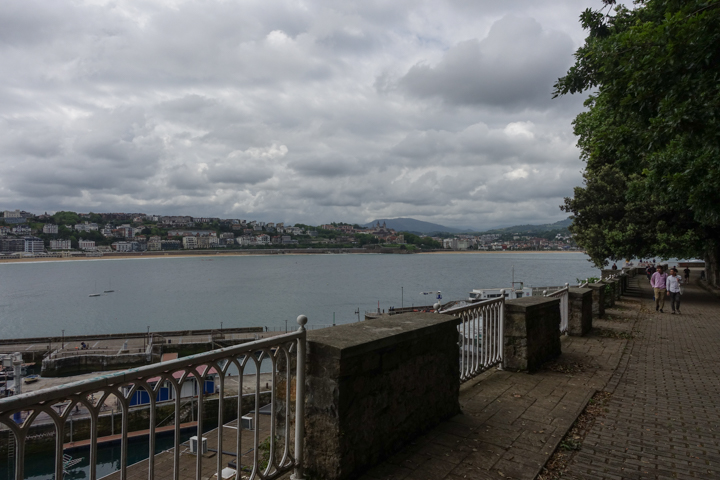
And some of the houses along that beach:
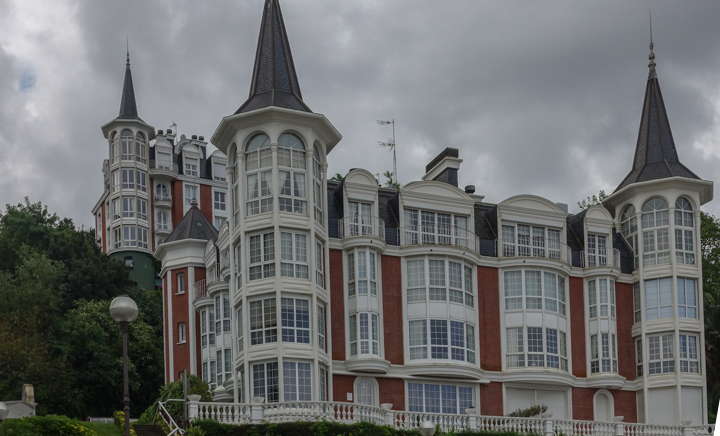
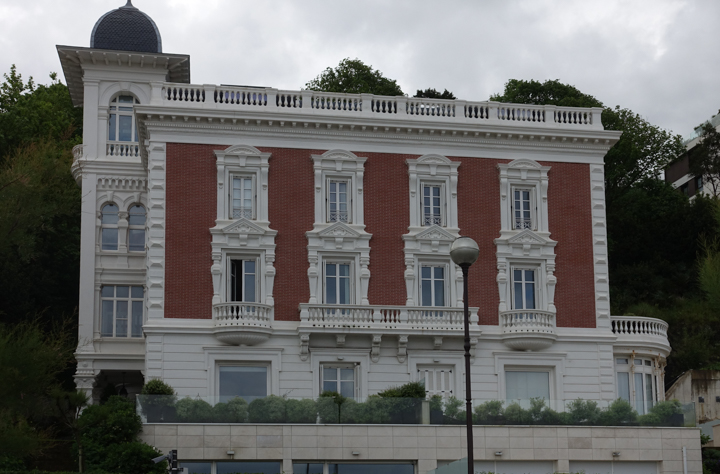
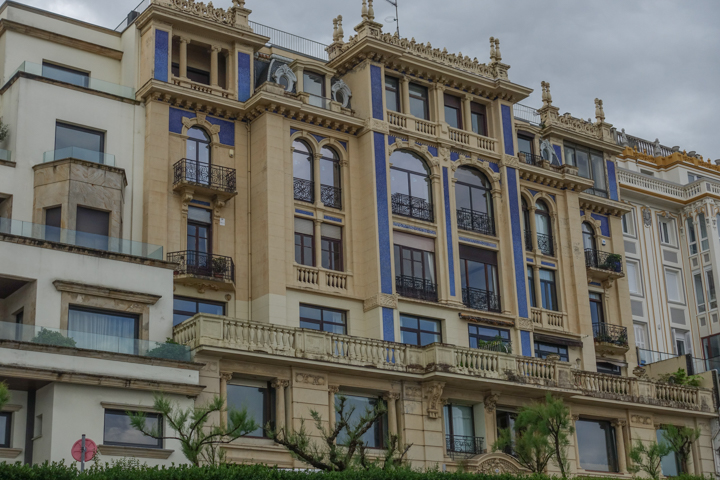
Beautiful Buildings
San Sebastian does have a lot of beautiful buildings. The ones below were built after the 1813 burning of the city by British and Portuguese armies.
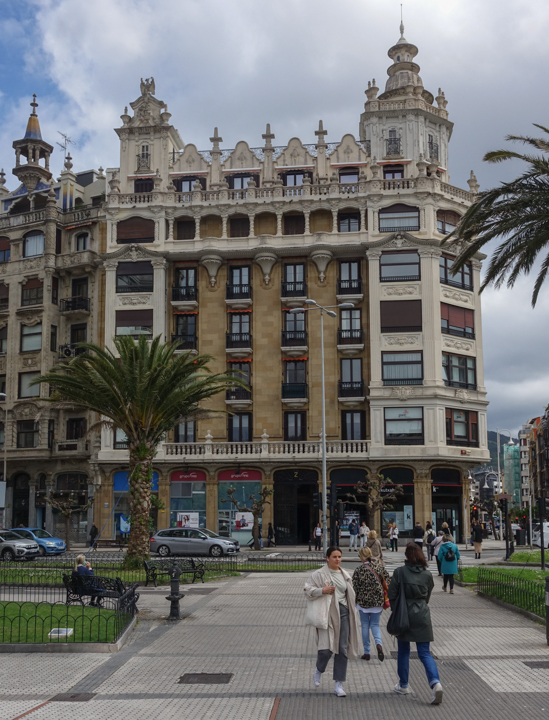
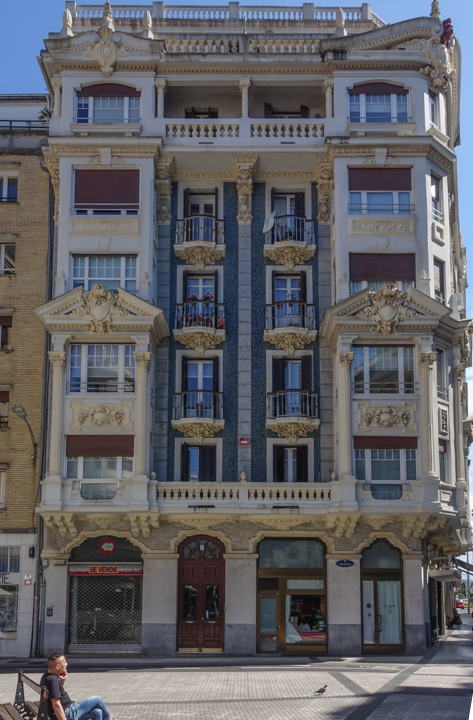
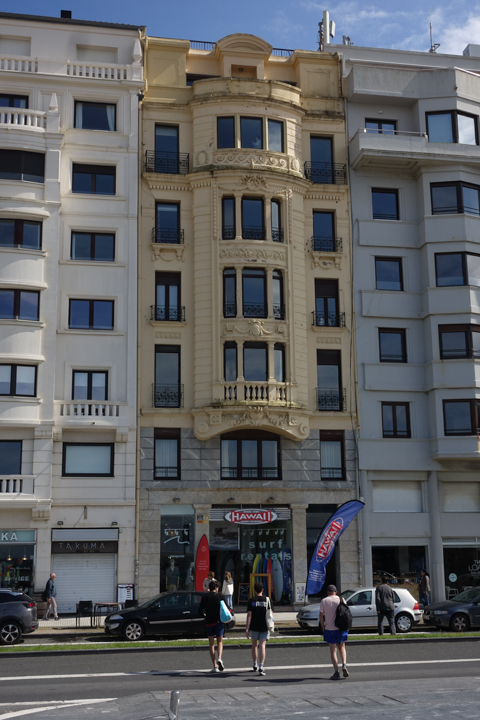
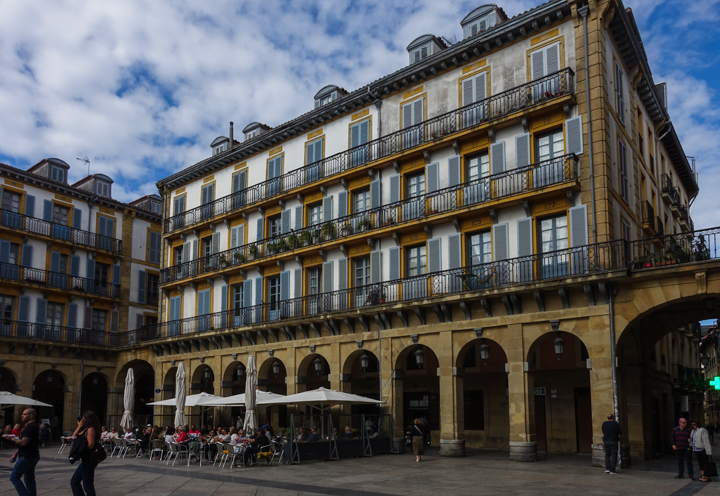
Eduardo Chillia
Eduardo Chillida was an abstract sculptor who was born, raised and worked in San Sebastian for much of his life. This is one third of his sculpture “Comb of the Sea” which is installed on rocks at the western end of San Sebastian’s beach — the other two parts were similar, also attached to rocks rising out of the ocean. The sculpture was pretty dang cool, and it would be spectacular among the crashing waves of the storms that come off the ocean.
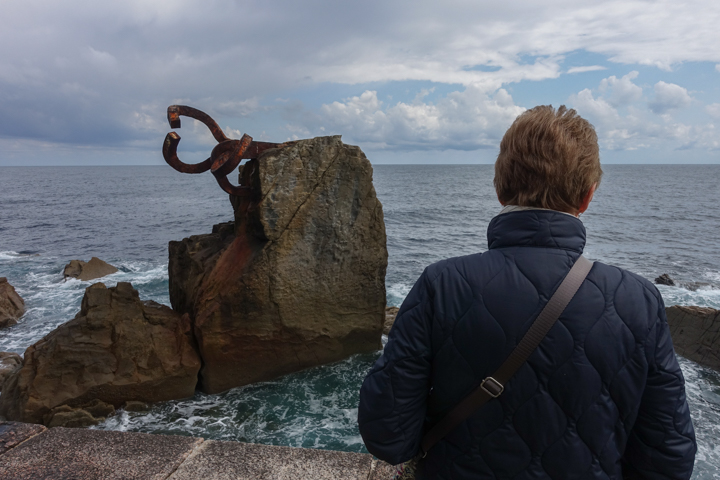
We enjoyed poking about in San Sebastian and though we had to wait out more than one downpour, we liked the city. The pintxos crawls were great fun. Honestly, I doubt we’ll be back to San Sebastian — a little too touristy and though we loved the pintxos bars, we didn’t love them enough to bring us back.